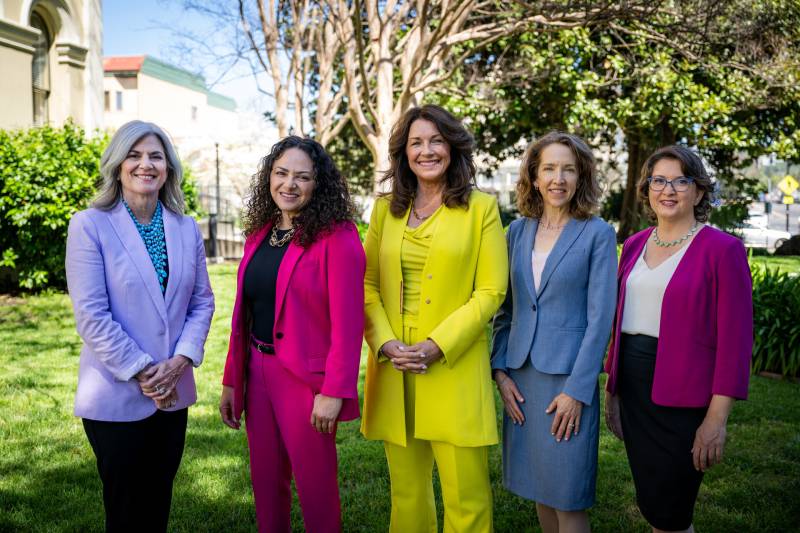In its 172-year history, only seven women have served on the Napa County Board of Supervisors. The first, Virginia “Ginny” Simms, was elected in 1972, half a century after women gained the right to vote in the United States.
But come next January, all five seats on the board will be filled by women, a historic first for Napa — and the Bay Area. Napa, a largely rural county with a population of about 134,000, is only the second county in California to elect an all-female board. Los Angeles County, a megalopolis of 9.8 million people, was the first to do so in 2020.
With final results certified, Amber Manfree, Liz Alessio and incumbent Belia Ramos will join Supervisors Joelle Gallagher and Anne Cottrell. “It’s exciting to be part of a historic moment,” Ramos said. “The people voted in who they believed were the most qualified and capable candidates, and they all happened to be women.”
In Napa, a place where rolling green hills and orchards that produce world-famous wine dominate the landscape, the Board of Supervisors holds significant influence. Millions of dollars in social programs, wildfire preparation and the rules that the powerful wine industry must follow, all are under the purview of the board. And this year’s electoral results may represent a shift, not just in the demographics of those in power, but in the way that politics in Napa are done.
A diverse board
Within hours of polls closing, one supervisor-elect was moving toward a swift victory. Napa City Councilmember Liz Alessio was already 50 points ahead of her opponent, retired educator Doris Gentry, in the race for the District 2 seat on the board. Gentry told KQED that same night she would be calling Alessio to congratulate her.

